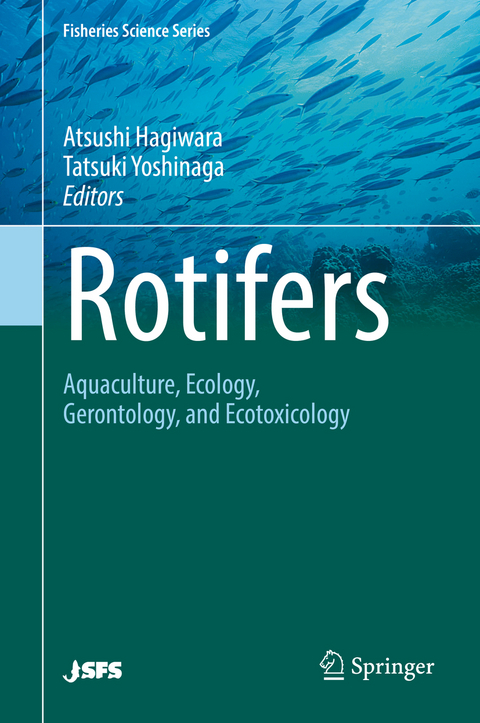
Rotifers
Springer Verlag, Singapore
978-981-10-5633-8 (ISBN)
linked, and provide readers with comprehensive information on how rotifers are now being employed in biological investigations.
Editors Atsushi HagiwaraPhD, Professor, Graduate School of Fisheries and Environmental Sciences, Nagasaki University Tatsuki Yoshinaga PhD, Associate ProfessorSchool of Marine Biosciences, Kitasato University
Chapter 1. Taxonomy 1-1. Current status of morphological classification in aquaculture strains (Kotani, Hagiwara)1-2. Speciation and evolution of Brachionus (Snell, Serra, Fontaneto) Chapter 2.- Live food 2-1. Mass culture and preservation of Brachionus (Koiso, Kuwata, Hagiwara) 2-2. Enrichment of rotifers and its effect on the growth and survival of fish larvae (Kotani) 2-3. Utility of rotifers on the larval rearing of marine fishes cultivated under various conditions (Sakakura) 2-4.Other potential rotifer species as a live food (Ogata, Kurokura, Hagiwara) Chapter 3.- Model organism 3-1. Life history evolution in the rotifer (Stelzer) 3-2.Population dynamics in the rotifer (Yoshinaga) 3-3. Aging and lifespan in the rotifer (Kaneko) 3-4. Origin of sex: significance of sexual reproduction (Welch) 3-5. Ecological diagnosis (Suga, Snell) 3-6. Genomics (Suga, Welch, Lee).
| Erscheinungsdatum | 18.01.2018 |
|---|---|
| Reihe/Serie | Fisheries Science Series |
| Zusatzinfo | 12 Illustrations, color; 15 Illustrations, black and white; XIV, 180 p. 27 illus., 12 illus. in color. |
| Verlagsort | Singapore |
| Sprache | englisch |
| Maße | 155 x 235 mm |
| Themenwelt | Naturwissenschaften ► Biologie ► Ökologie / Naturschutz |
| Naturwissenschaften ► Biologie ► Zoologie | |
| Naturwissenschaften ► Geowissenschaften ► Hydrologie / Ozeanografie | |
| Weitere Fachgebiete ► Land- / Forstwirtschaft / Fischerei | |
| Schlagworte | Aquaculture • Biology • Brachionus plicatilis • live food • model organism • Rotifers |
| ISBN-10 | 981-10-5633-1 / 9811056331 |
| ISBN-13 | 978-981-10-5633-8 / 9789811056338 |
| Zustand | Neuware |
| Haben Sie eine Frage zum Produkt? |
aus dem Bereich


